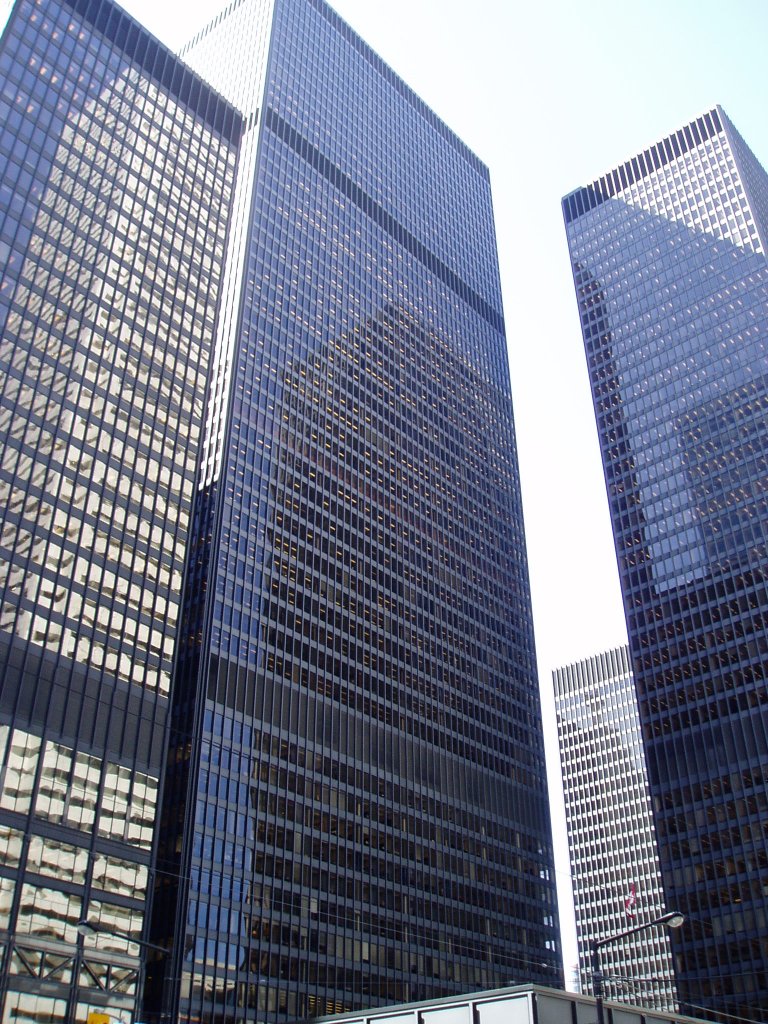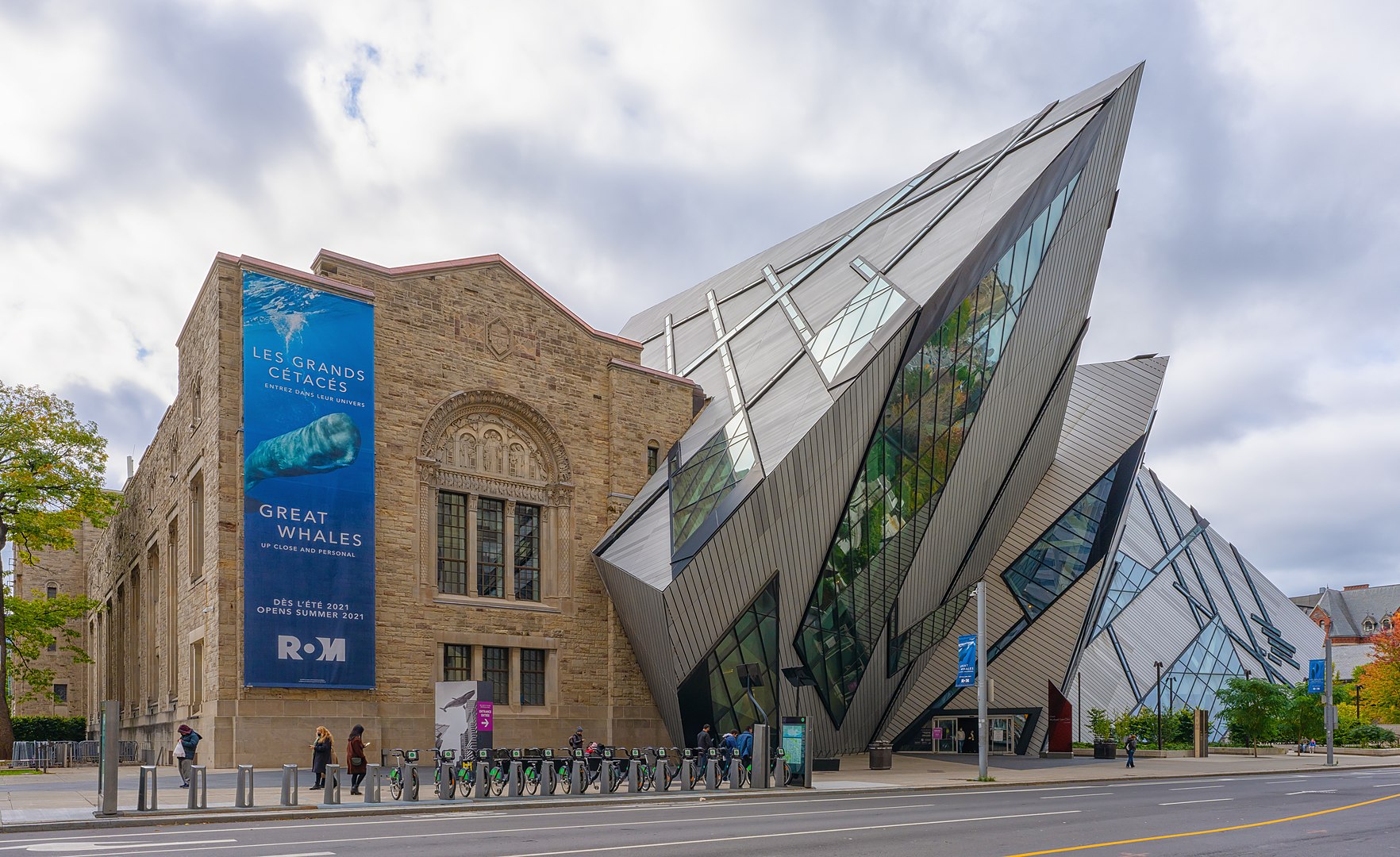
Royal Ontario with Crystal Addition
Canadian Architecture: A Journey Through Time
Canadian architecture is a reflection of the country’s diverse history, geography, and cultural influences. From Indigenous designs rooted in nature to European-inspired colonial structures and modernist innovations, Canadian architecture spans a wide range of styles and movements. Here’s an overview of key periods and styles:
-
1. First Nations Architecture
- Plains Tipis: Temporary cone-shaped structures built with animal hides over wooden poles, used by nomadic Plains Indigenous groups.
- West Coast Longhouses: Rectangular wooden structures built by the coastal First Nations, especially the Haida and Coast Salish, using abundant timber from forests. They often featured carved totem poles.
- Wigwams: Dome-shaped dwellings made from wood frames and covered with bark or hides, used by Algonquian-speaking peoples.
- Igloos: Temporary snow dwellings used by the Inuit in the Arctic during hunting expeditions, designed to provide warmth in extreme cold.
- French Colonial: The French established settlements in what is now Quebec, bringing with them masonry techniques. Homes were often built with thick stone walls, steep roofs (to shed snow), and small windows. Notable examples include **Maison Chevalier** and the **Church of Notre-Dame-des-Victoires** in Quebec City.
- British Colonial: In the Maritime provinces and Ontario, British settlers adapted Georgian styles, characterized by symmetry, brick construction, and restrained decoration. Examples include **Castle Hill** and **Province House** in Prince Edward Island.
- Neoclassical: In governmental and institutional buildings, neoclassical architecture became popular, reflecting ideals of order and democracy. The **Parliament Buildings** in Ottawa are a prime example.
- Gothic Revival: With its pointed arches and intricate stonework, this style became common in churches and civic buildings. Examples include **Christ Church Cathedral** in Ottawa and **Notre-Dame Basilica** in Montreal.
- Romanesque Revival: Used for more imposing buildings like city halls and courthouses, characterized by heavy stone facades and rounded arches. The **Toronto City Hall (Old)** and **Halifax’s Province House** showcase this style.
- Second Empire: Popular in the late 19th century, it was characterized by mansard roofs and ornate detailing. This can be seen in buildings like the **Citadel Theatre** in Quebec City.
- Queen Anne: Featuring asymmetrical facades, towers, and decorative woodwork, Queen Anne homes were common in growing cities like Toronto and Montreal.
- Italianate: Marked by decorative brackets, tall narrow windows, and cupolas, Italianate homes can be found across Ontario and Quebec.
- Prairie Vernacular: A style that emerged in the prairies, characterized by simple, functional designs using local materials. Farmhouses and barns in Western Canada reflect this style.
- Château Style: A distinctive Canadian architectural form combining French Renaissance and Gothic elements, often used in grand railway hotels such as the **Château Frontenac** in Quebec City and **Banff Springs Hotel** in Alberta. These hotels were built during the Canadian Pacific Railway expansion, representing national pride.
- Art Deco: This style, with its geometric shapes and decorative details, influenced skyscrapers and public buildings like the **Marine Building** in Vancouver.
- International Style: Influenced by European modernists like Le Corbusier and Mies van der Rohe, this style favored minimalist designs and the use of modern materials. The **Toronto-Dominion Centre**, designed by Mies van der Rohe, is a famous example.
- Toronto-Dominion Centre**: This cluster of skyscrapers, designed by Ludwig Mies van der Rohe, exemplifies the International Style’s emphasis on simplicity and function.
- Place Ville Marie: A modernist complex in Montreal, designed by I. M. Pei, reflecting the growing urbanism of Canadian cities.
- Toronto’s Mississauga Civic Centre: A postmodern building that integrates geometric shapes, bright colors, and classical references.
- Vancouver Public Library: Designed by Moshe Safdie, it features a monumental, almost classical colonnade but with modernist materials and a focus on public space.
- Canadian Museum of History (Ottawa): Designed by Indigenous architect Douglas Cardinal, this building’s flowing, organic shapes reflect the landscape and Indigenous heritage.
Before European colonization, Indigenous peoples across Canada developed various architectural forms suited to their environments and ways of life. Each First Nation group had unique building techniques:
2. Arrival of Europeans (16th-18th Centuries)
When Europeans began colonizing Canada, they brought architectural traditions from their home countries. The French and British were the most influential.
3. Growth and Expansion (19th Century)
As Canada grew in the 19th century, the architecture began to reflect the increasing urbanization and industrialization.
4. Victorian Architecture (Mid-Late 19th Century)
Victorian architecture arrived during Canada’s expansion and confederation. This period saw a diversity of styles:
5. Canadian Styles (Late 19th to Early 20th Century)
6. Modernist Period (1920s-1960s)
Following World War I, Canadian architects embraced modernism, characterized by simplicity, functionality, and new materials like glass, steel, and concrete.
7. International Style (1960s-1970s)
The International Style became more prominent in Canada, especially for corporate and institutional buildings. Its defining features were clean lines, open spaces, and the use of glass and steel.
8. Late and Postmodernism (1970s-Present)
Postmodernism emerged in response to the perceived austerity of modernist designs, introducing a return to ornamentation, historical references, and playful forms.
Late Modernism: Today’s Canadian architecture embraces sustainability, with many new buildings focusing on eco-friendly designs, such as the CIBC Square in Toronto and **the Vancouver Convention Centre** with its living roof.
Conclusion
Canadian architecture is a rich tapestry that mirrors the country’s history and diversity. From Indigenous structures rooted in the natural environment to colonial influences and modernist innovations, Canada’s buildings tell the story of a nation constantly evolving while honoring its past.
A group of haida bighouses
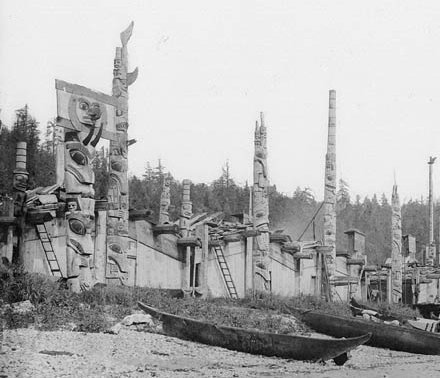
Banff Springs, Alberta
Chateau Style
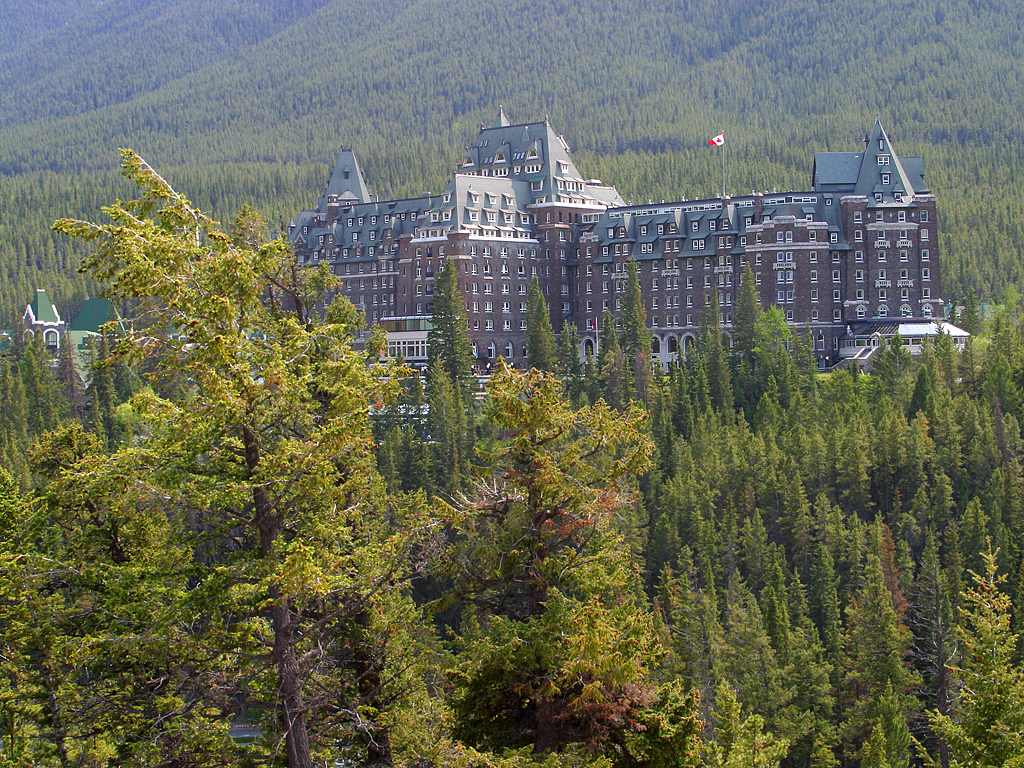
Campbell House, Toronto
Georgian Style
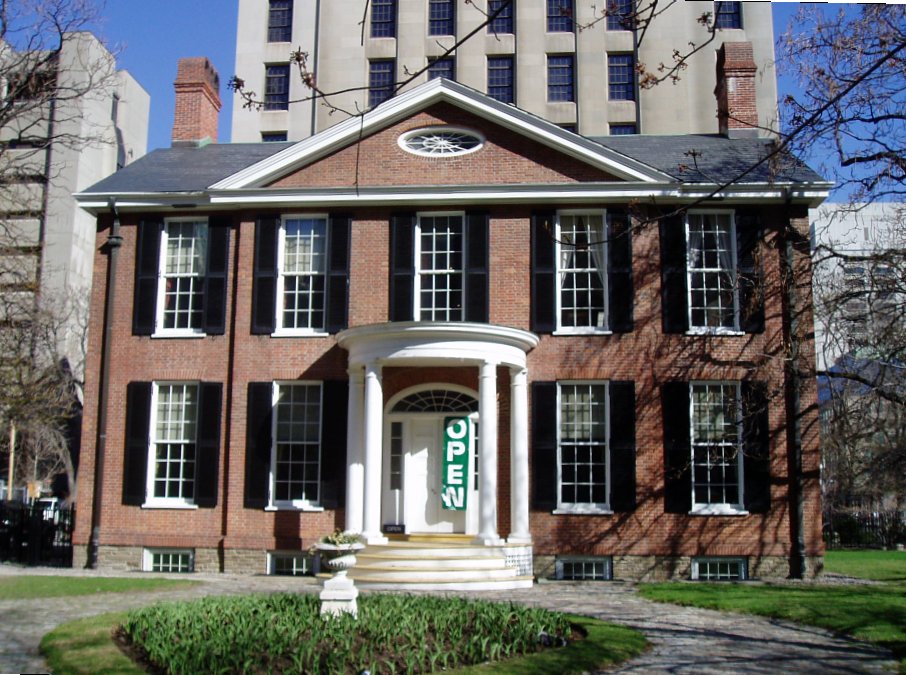
Maison de Julien Gendrea
Archetypical example of rural New France home
Staint Laurent, Iles d’Oleans
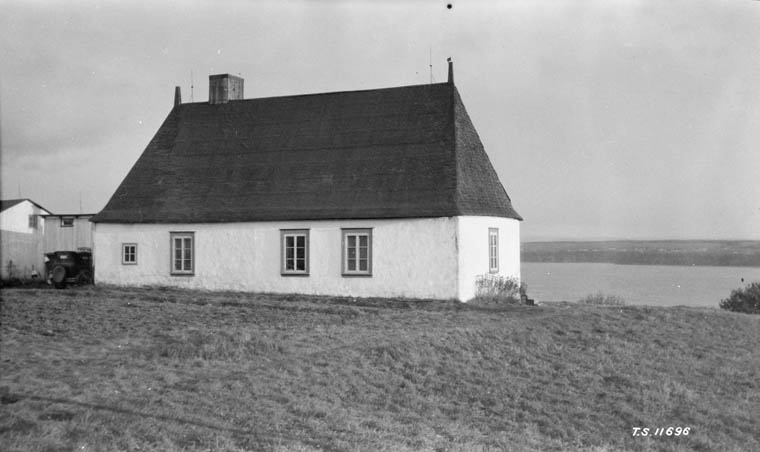
Marine Building Lobby
Vancouver
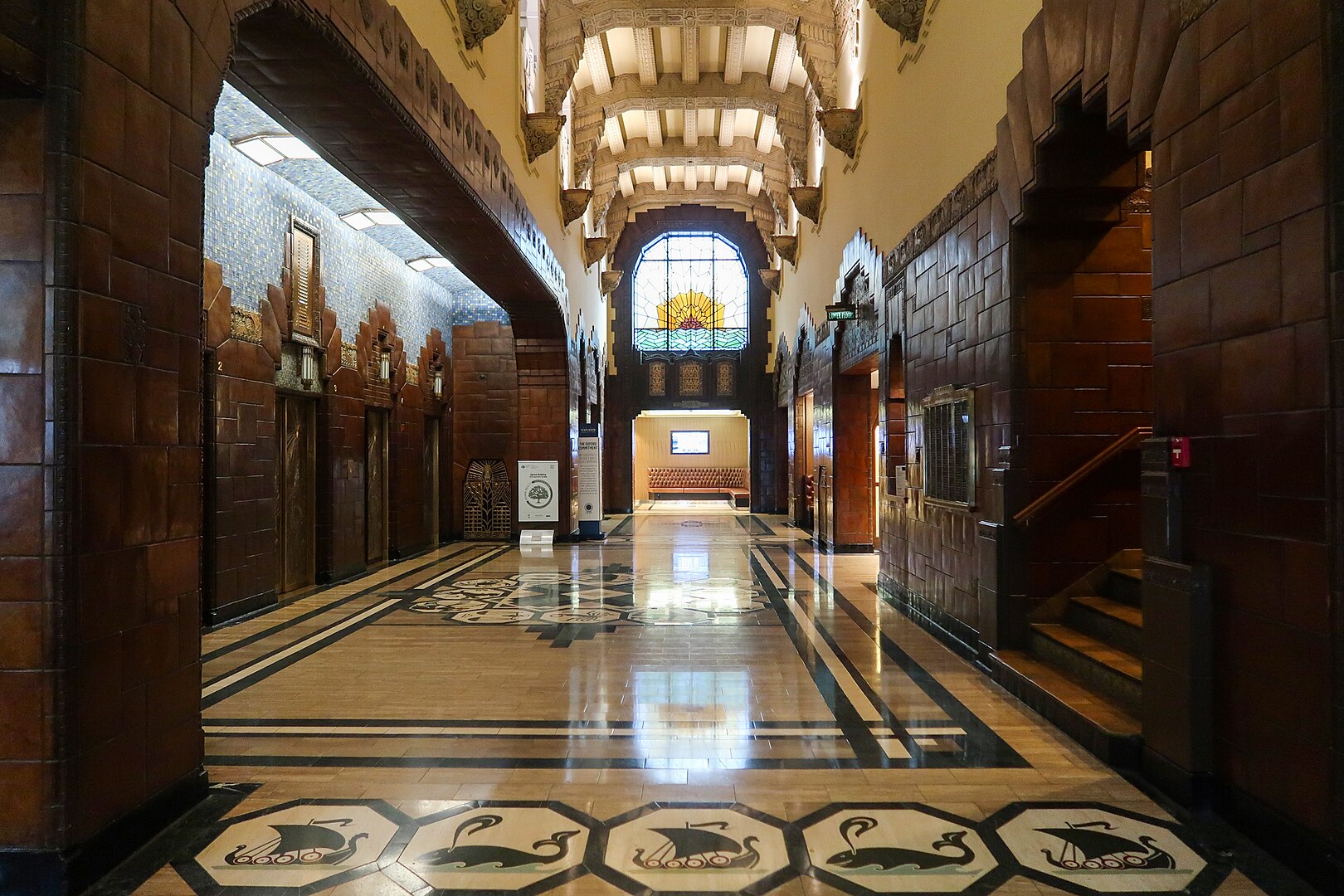
Missisauga City Hall
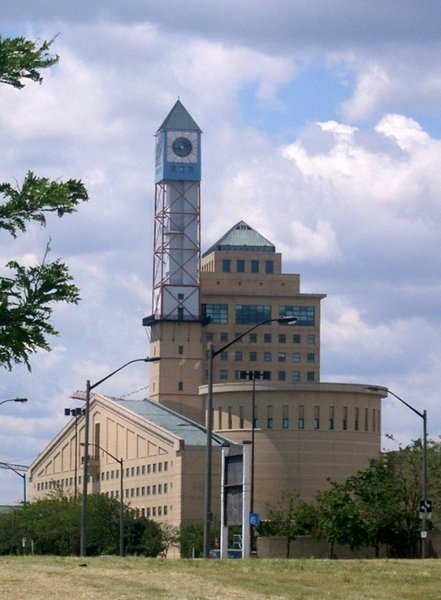
Simeon Perkins House
Nova Scotia
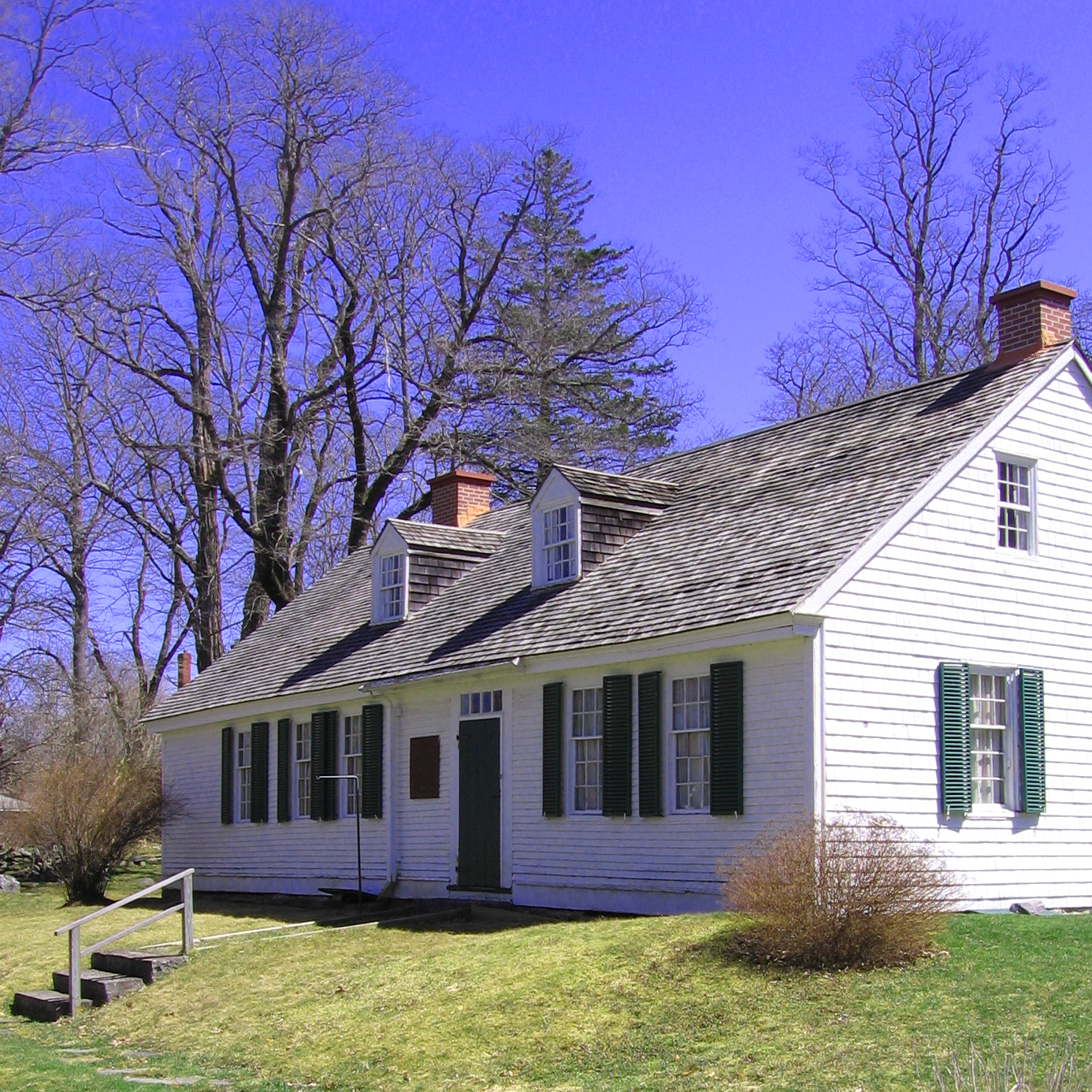
St Michaels Cathedral
Gothic Revival
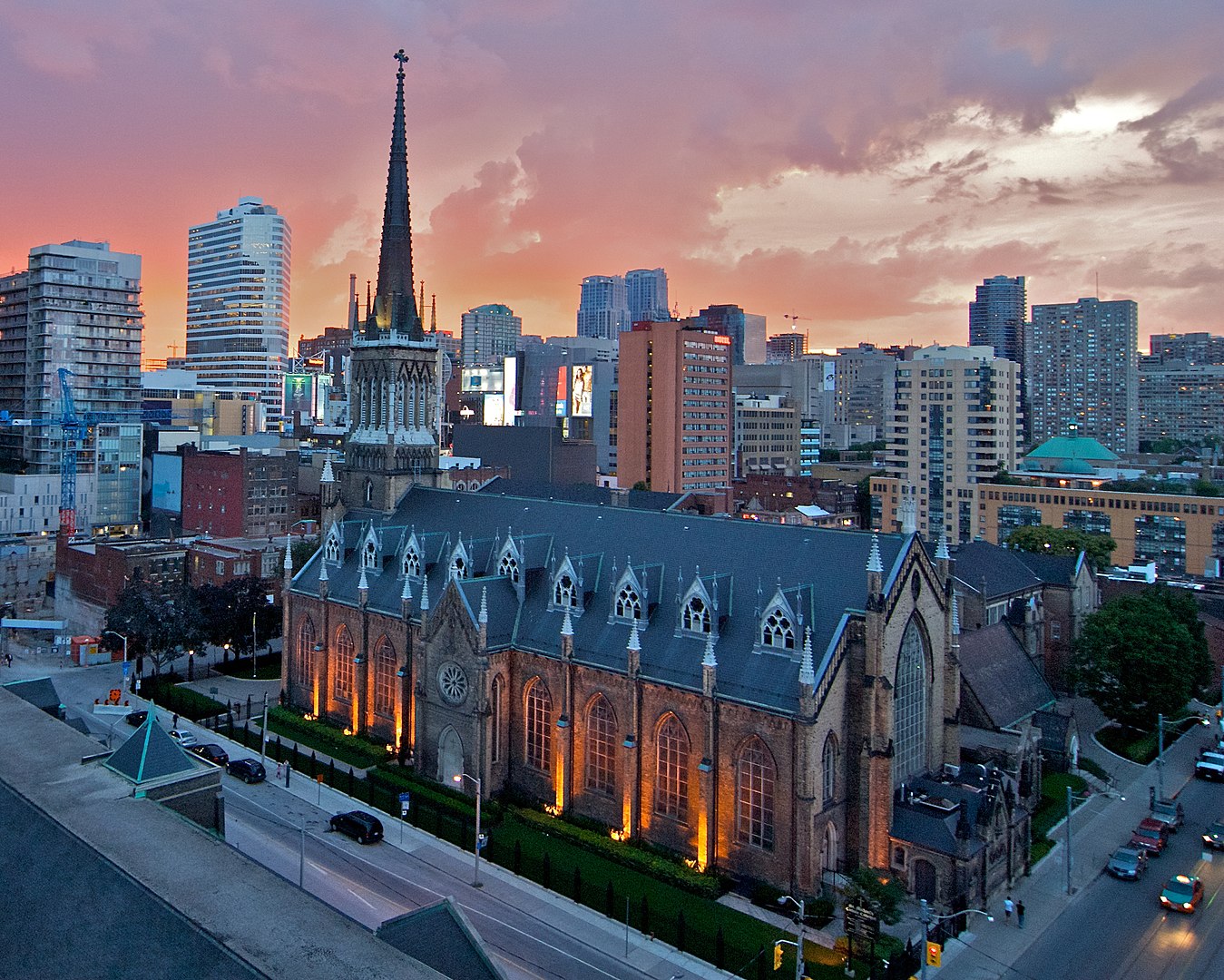
The Bow
Calgary
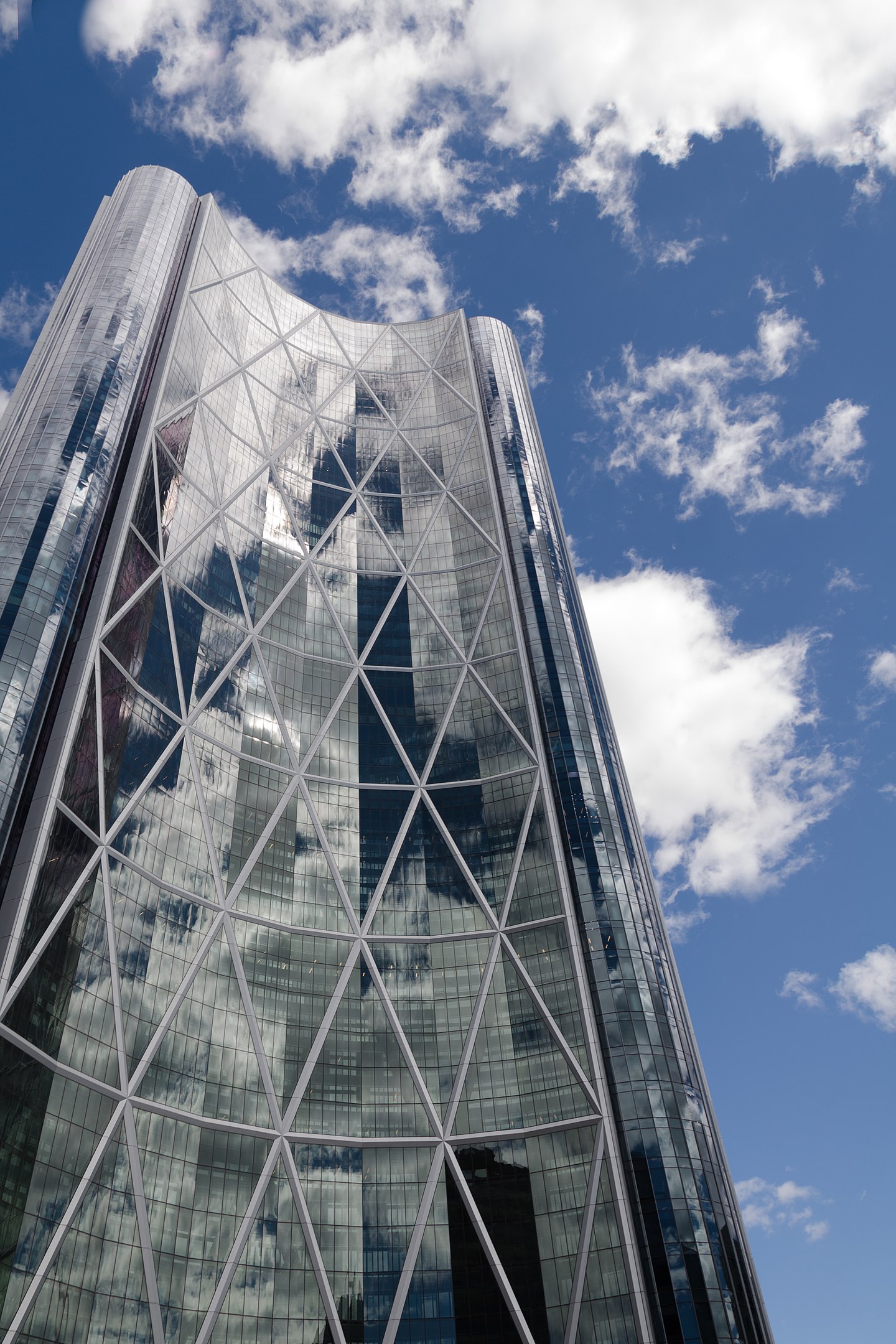
The de Gannes Cosby House
Annapolis Royal, Nova Scotia
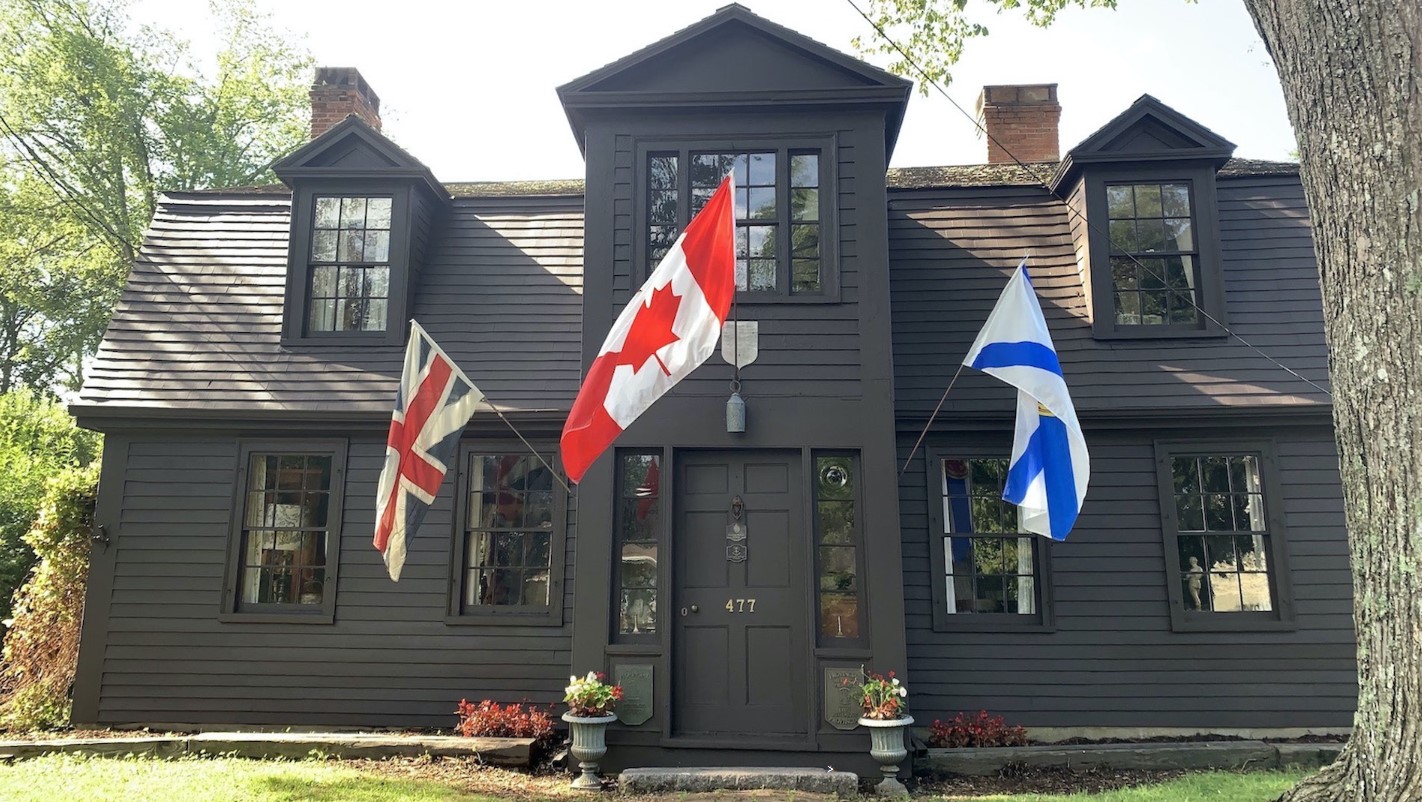
Toronto Dominion Centre
